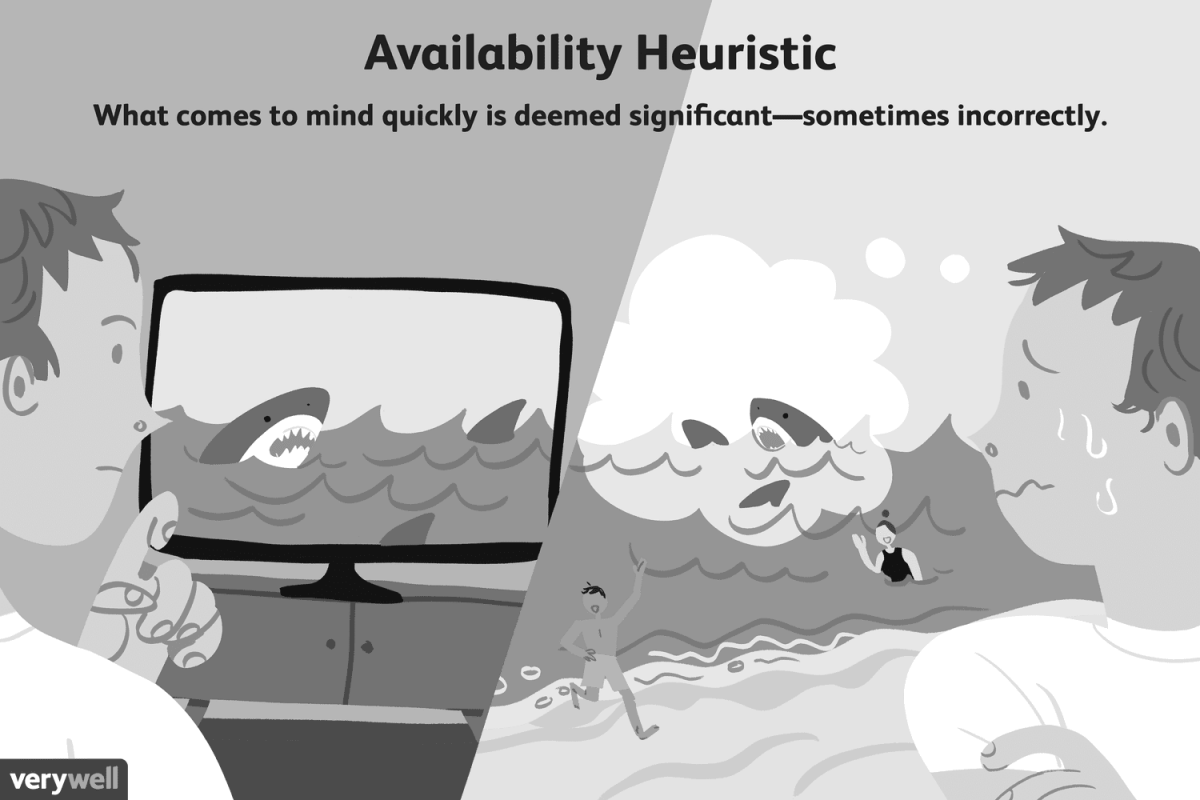Introduction
In the realm of decision-making, the Heuristic for Availability is a mental model that influences our judgments and choices. Anchored in human psychology, this heuristic suggests that the ease with which examples or information come to mind shapes our perception of their likelihood or importance. Understanding the relevance of the Heuristic for Availability is essential as it pervades our day-to-day lives and can lead to biased and irrational decision-making.
Relevance of the Heuristic for Availability in Decision-Making
The Heuristic for Availability plays a significant role in decision-making processes across personal, business, and public policy contexts. It affects how we assess risks, evaluate options, and form judgments. By understanding this mental model, we can recognize its prevalence in our lives and make more objective and informed decisions.
Anchored in Human Psychology
The Heuristic for Availability is rooted in cognitive processes related to memory retrieval and mental accessibility. Our minds tend to rely on what is readily available and easily retrievable when making judgments or predictions. This heuristic is deeply connected to the structure of our memory, which is influenced by personal experiences, media exposure, and recent events. By understanding these psychological underpinnings, we can better comprehend how the Heuristic for Availability shapes our decision-making.
Examples of the Heuristic for Availability in Various Contexts
- Personal Life Decisions: Imagine a person considering a vacation destination. If they recently read a compelling article about the beauty and safety of a specific location, that information becomes easily accessible in their mind. As a result, they may overestimate the likelihood of positive experiences and underestimate potential risks, leading them to make a decision solely based on the available information rather than a comprehensive evaluation.
- Business Scenarios: In the business world, the Heuristic for Availability can impact decision-making processes. For instance, a company’s marketing team may prioritize advertising on a specific platform simply because it is popular and frequently mentioned in industry discussions. By relying on the availability of information rather than conducting a thorough analysis of various marketing channels, the company may miss out on more effective and cost-efficient options.
- Public Policy-Making: The Heuristic for Availability can also influence public policy decisions. When policymakers respond to public concerns or media narratives that are more salient and vivid, they may overlook less visible but equally pressing issues. This can lead to policies that address immediate concerns but neglect long-term and systemic challenges, ultimately compromising the overall effectiveness of the policies.
Mental Biases and Psychological Underpinnings
Several mental biases contribute to the Heuristic for Availability
- Availability Bias: This bias occurs when we rely on readily available information and examples, even if they do not accurately represent the overall frequency or likelihood of an event. Our minds prioritize vivid and memorable instances, leading to skewed judgments.
- Anchoring Bias: When evaluating a situation, the Heuristic for Availability interacts with the Anchoring Bias, wherein we rely heavily on the first piece of information we encounter. This initial information sets a mental anchor, which influences subsequent judgments and decisions.
- Priming Effect: Our responses to a specific stimulus can be influenced by prior exposure to related information or experiences. This priming effect can make certain examples or ideas more accessible in our minds, thereby influencing subsequent decisions.
Avoiding the Pitfalls of the Heuristic for Availability
To avoid succumbing to the Heuristic for Availability, it is crucial to adopt a more deliberate and comprehensive decision-making approach. Here are some strategies
- Seek Diverse Information: Actively seek out a wide range of information sources, perspectives, and experiences. By exposing yourself to diverse viewpoints and less accessible information, you can counterbalance the biases associated with the Heuristic for Availability.
- Engage in Reflective Thinking: Take the time to reflect on your own mental processes and biases. Consider the factors that may influence your accessibility to certain information and challenge yourself to dig deeper and explore alternative viewpoints.
- Conduct Systematic Analysis: Rather than relying solely on easily accessible examples or information, engage in a systematic and rigorous analysis. Evaluate data, consider multiple scenarios, and seek objective evidence to inform your decisions.
Conclusion
The Heuristic for Availability is a powerful mental model that influences our decision-making processes. By understanding its prevalence, anchoring in human psychology, and the associated biases, we can become more aware of its potential pitfalls. By seeking diverse information, engaging in reflective thinking, and conducting systematic analysis, we can mitigate the impact of the Heuristic for Availability and make more rational and informed decisions. Being cognizant of this mental trap and actively avoiding its influence is crucial for achieving better outcomes in our personal lives, businesses, and public policy-making endeavors.
